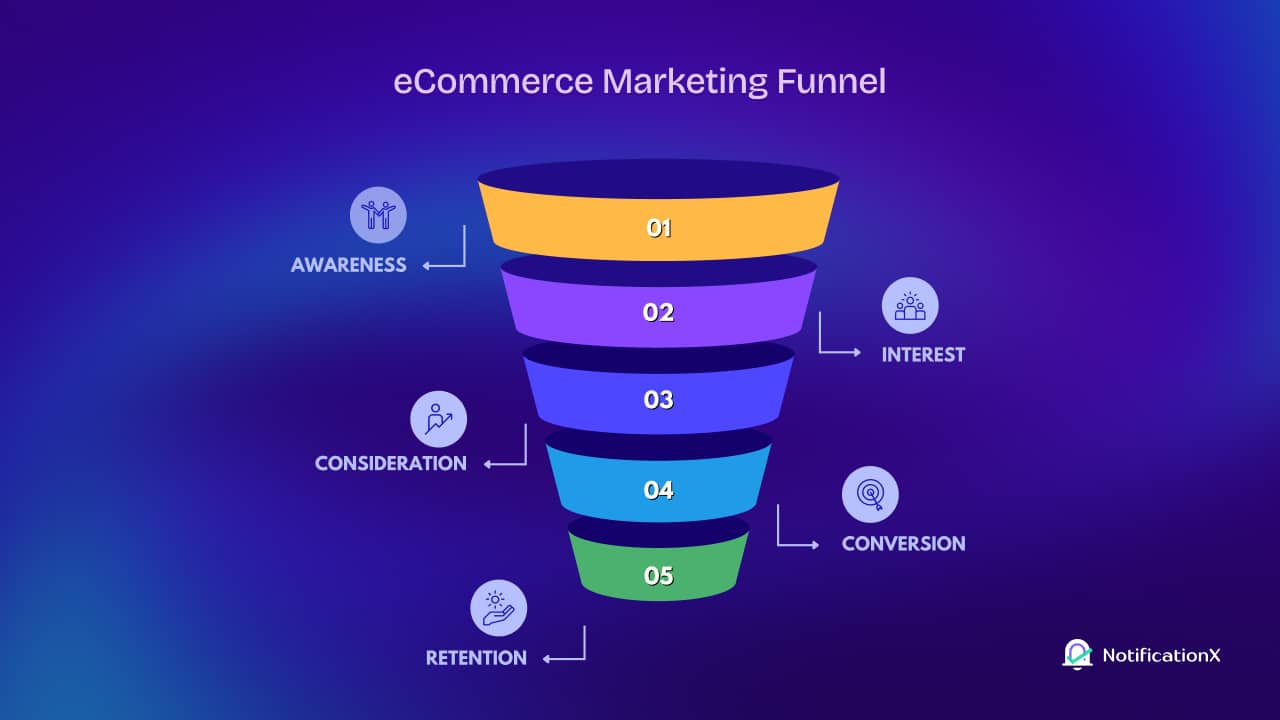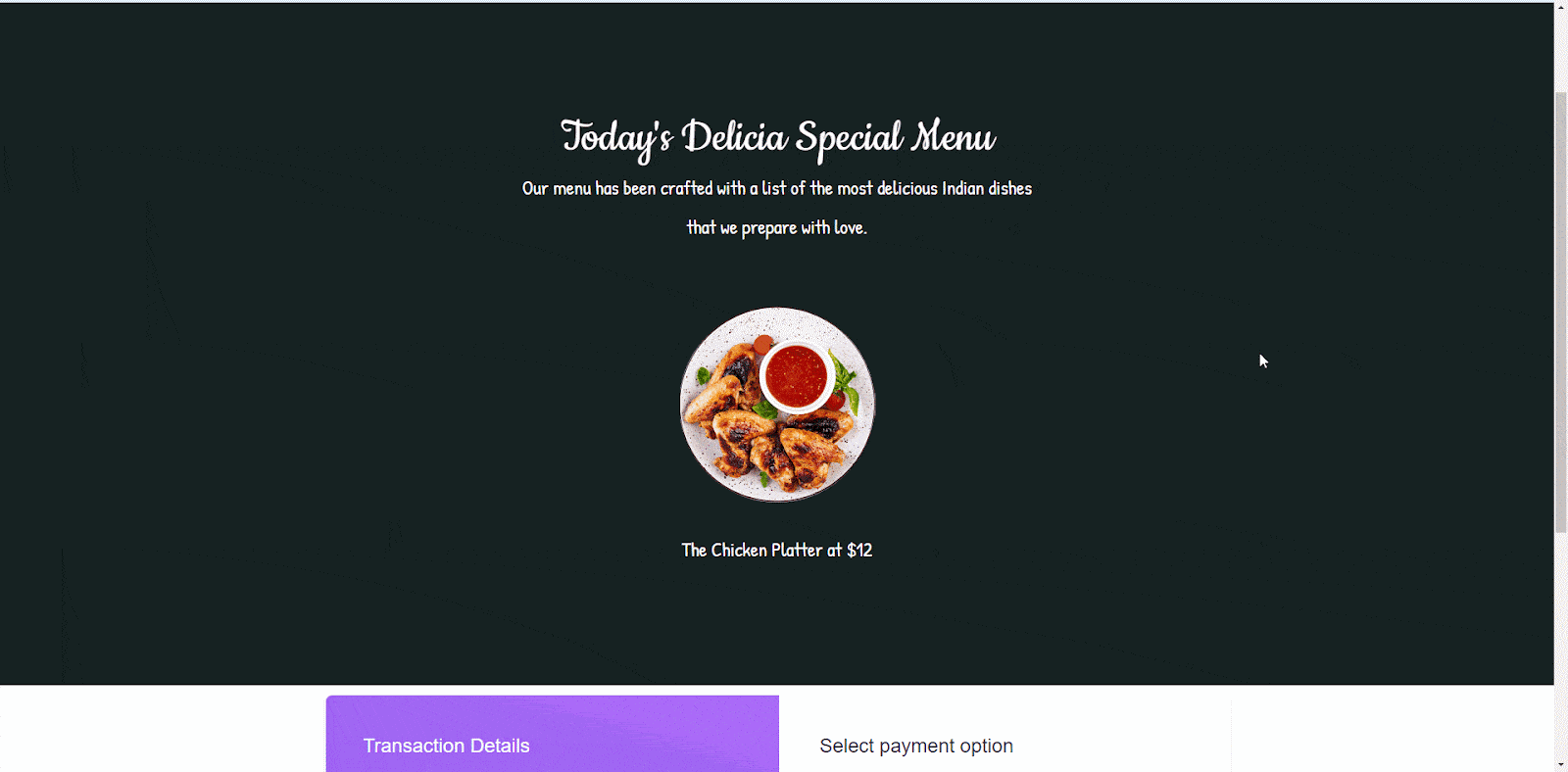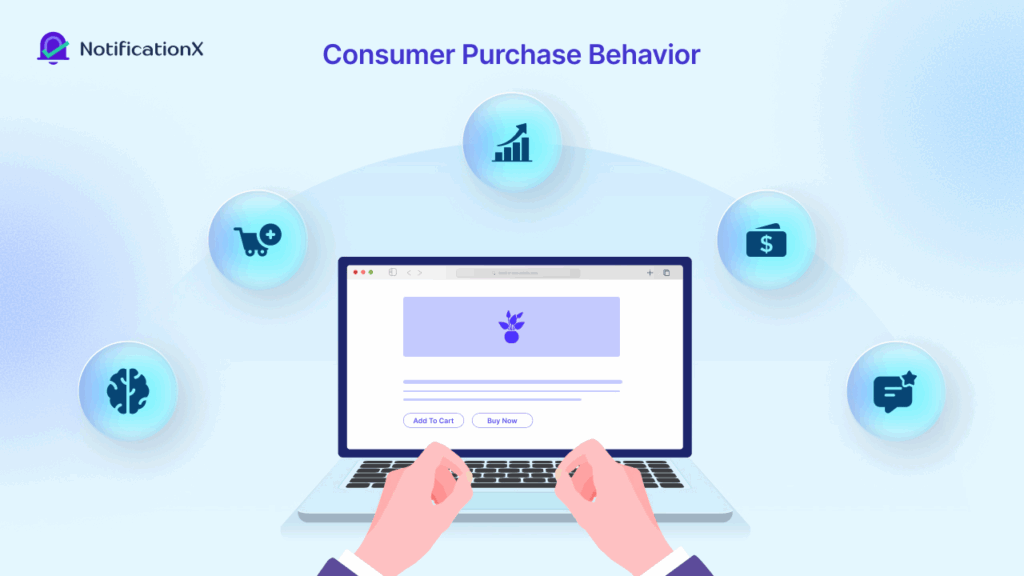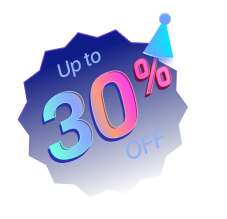In the competitive world of eCommerce, standing out and truly understanding your customers can be challenging. However, building strong connections and delivering tailored experiences can give you a competitive edge, driving more revenue to your platform.

To create successful eCommerce campaigns, understanding this process is crucial, and that is where a marketing funnel comes in. But what exactly is it, and how does it work? This blog will break it down for you in detail.
What Is A Marketing Funnel And Why Do eCommerce Businesses Need One?
A marketing funnel is the framework that captures the journey of a customer from capturing potential customers to retaining them. A proper and well-structured funnel is essential for any business’s growth as well as for eCommerce platforms.
Understanding the marketing funnel is key to building customer loyalty and driving business growth, especially in eCommerce. Repeat purchases, a strong, loyal customer base, and high conversion rates are clear indicators of a successful online store. Here’s how the marketing funnel plays a crucial role in achieving that success.
⭐ Improves Conversion Rates
Each stage of a marketing funnel outlines a customer’s journey when purchasing a product. The better you understand this journey, the more likely your visitors are to convert into customers. For instance, if you notice that your website visitors are frequently visiting a specific product landing page but are not making any purchases, you can offer them a discount to encourage them to buy.

⭐ Enhances Customer Engagement
A marketing funnel helps you better understand customers’ behavior towards your business. Through this funnel, businesses understand their customers, which platform they explore the most, their purchasing behavior, etc. For example, a sports shoe eCommerce store understands that most of their customers are from social media platforms, so they can ask for reviews from there and understand what they do like and do not like about the products.
⭐ Helps Retain Customers
It is essential to not only acquire customers but also to retain them. When customers make repeated purchases, it demonstrates their trust in your products and increases the likelihood that they will recommend your store to others. To effectively understand and implement a retention strategy, the marketing funnel is crucial.
For example, you could offer exclusive discounts through a loyalty program for repeat customers. Here the marketing funnel will help you to understand in which stage your customer is currently in and to whom you should give these exclusive offers.
Understanding the Stages of the eCommerce Marketing Funnel
To increase sales on your eCommerce platform, you need to know the key stages that turn a visitor into a customer. In this section, you will learn more about each stage of the eCommerce marketing funnel with examples.

🟦 Awareness: Attract Shoppers
At the very first stage, you have to be aware of your potential customers for your eCommerce business. This is called the awareness stage. The main goal of this stage is to acquire your customers through different channels. These channels can be organic search, paid advertising, word-of-mouth, etc.
Through different content on those channels, you attract the shoppers to your eCommerce platforms. For instance, a fitness apparel brand creates engaging Instagram ads showcasing their latest workout gear and shares fitness tips through blog posts.
🟦 Interest: Spark Curiosity
In the next stage, when your potential customers are already aware of the product, in this stage, they research more about the product. Here, you have to create offers that make people interested in your product.
For example, the fitness apparel brand offers a free workout guidebook to those who sign up for their newsletter. Later on, they can send emails about different products to the subscribers to spark curiosity about the products.
🟦 Consideration: Build Trust
In the next stage, your customers need to consider buying your products. Here, you have to build trust with them so that they think about taking offers. But how do you do that? This can be through social proof, reviews, etc.
Like the previous example, if we consider the fitness apparel while offering the products, they can show the positive, high-rated customer reviews to potential customers. So that they can trust the product and consider purchasing from the store.
🟦 Conversion: Seal the Deal
In this stage, your customer is in the purchase stage and converts themselves into customers. Here, visitors might add one or more products to the cart, since they have considered purchasing from your eCommerce store.
Like the fitness apparel store, you can offer discount offers to those who have items in their cart for more than one week, or you can send a cart abandonment email with a reminder and a special promo code, making the purchase irresistible.
🟦 Retention: Boost Loyalty
Once your web visitors become customers, it is crucial to focus on retaining them. Encouraging repeat purchases helps build a loyal customer base, which can also attract new customers to your platform.
For instance, a fitness apparel store could offer referral codes to repeat customers. If these customers share the code with new customers, the newcomers would receive a discount, while the existing customers would also enjoy a significant discount on any of the products they purchase. This strategy fosters a sense of loyalty among customers.
Guide: Steps to Create an eCommerce Marketing Funnel
Now that you have understood the stages of marketing funnels, it is time to create one. For your eCommerce store, you have to follow the steps based on the stages. Here are the steps you need to follow for creating an eCommerce marketing funnel.
Step 1: Research Your Target Audience
Researching your target audience helps you to make the funnel more efficient and impactful. If you can understand the audience, you will know their likes and dislikes, where you will find them, etc. While researching your target audience, you should keep in mind these questions:
- What are the audience demographics?
- What are their pain points?
- What lifestyle do they lead?
- How do they purchase new products?
- Which platforms did they use the most?
- What information do they want while making a purchase?
- What price range are they comfortable with?
Focus group discussions and surveys with customers can help you better understand the audience and make the funnel creation process easier.
Step 2: Define Each Stage
Next, you have to identify the stages your customers are in. Not all your customers will be on the same stage of the funnel. For each target audience, you have to identify which stage they are in. For example, the customers you are researching the demographics for, they are in the awareness stage. But when you want to understand their pricing range, you have to understand the consideration stage. That is why you have to map the funnel and understand your audience’s stage.
Step 3: Set KPI And Measure
After properly understanding each stage, you have to set KPI (Key Performance Indicator) and measure the performance. Here, you have to define your metric. In each stage, this KPI is necessary to better understand the customer’s behavior.
For example, in a clothing eCommerce store, in the awareness stage, the KPI can be website traffic and impressions. In the interest stage, KPIs like email sign-ups or engagement on social media can help measure how well the content is resonating with the audience. In the conversion stage, the purchase rate and cart abandonment rate are key metrics to track.

Key Metrics for Measuring eCommerce Success
Since some metrics clearly define your eCommerce success, you have to know which metrics you should set and follow. For each stage, different metrics have to be measured. Here are some of the key metrics you should know for your eCommerce store.
| Stage | Metric | Description |
| Awareness | Traffic | How many people are visiting the website and the product page through organic search, social media, or other channels. |
| Impressions | How many people are viewing your products or websites from different social media platforms or paid search marketing. | |
| Clics | How many clicks do you get for your store or product. | |
| Engagement Rate | From the impressions, what is the rate of clicking and what is the progress. | |
| Interest | Leads | How many people are interested in the product and have shown interest. |
| Consideration | Product Page Views | How many people have seen the product page of your website. |
| Number of Reviews | How many people are giving reviews to your store and product. | |
| Conversion | Return on Advertising Spend (ROAS) | What is the return in terms of percentage on the advertisement you have spent. |
| Checkout Completion Rate | How many users finish the checkout process who added products to the cart. | |
| Retention | Repeat Purchase Rate | Percentage of customers who completed the purchase. |
| Valeur à vie du client (CLV) | The total revenue customers generate in their lifetime of the store. | |
| Churn Rate | The percentage of customers who stop buying from you. |
Since these metrics are important the next question comes: where can we measure this, or what is the right tool for these? Keep reading. We will discuss the necessary tools later in this blog.
Top Methods for eCommerce Conversion Funnel Optimization
Optimizing each stage of the funnel means that you can improve each stage. Different times, different methods have been implemented to optimize the process. But with modern times, you have to adapt to the optimization process. In this section, the top methods of the eCommerce conversion funnel optimization process are explained.
✅ Speed Up Your Page Speed
Imagine someone is finding a product that is only on your eCommerce website. But for the slow loading, your web visitors can not access the product. This creates a frustrating experience for users. That is why it is necessary to have a proper loading website. By maintaining the best practices to speed up your website, increase your web traffic and give a high chance to rank in search engines.
✅ Improve On-Page SEO
On-page SEO means improving the content based on keywords that people mostly search for. Improving on-page SEO can help you to rank better on search engines. For an eCommerce store, it is also an important part. Imagine someone is searching for ‘Blue Lace Shoes’ and your eCommerce website is ranked in the first position. It will increase your chances of boosting revenue and acquiring new customers.
✅ Understand Visitor Behavior
Try to understand how customers are interacting with your website. Are they exploring the products? Are they adding the products to the cart? If they do, then are they checking out? If the users are going back after loading a site? You can find it through various tools such as Google Analytics to better understand the behavior and create strategies for your customers’ journey.
✅ Provide Social Proof
Nowadays, people want to buy products based on trust. If the majority of the customers give positive reviews about a specific product, then it creates authenticity. This social proof can be from social media platforms or any review platforms.
If you have an eCommerce website in WordPress, then showing this social proof has become easier for you. In the NotificationX marketing plugin, you can provide social proof by showing the web visitors what people are talking about your platform or products. It has some customization features as well, through which you can show these notifications based on your brand identity.

✅ Personalization Marketing
Customers love it when a brand understands them and gives them value. Through personalization marketing, brands can get close to their customers and show them that they value them. In an eCommerce store, when in the consideration stage, these platforms can hear the problem while someone is trying to purchase the product and bring the product accordingly.
For instance, someone might not buy a product because he has a preferred colour. By contacting the customer and hearing their needs, eCommerce stores can bring the product and result in a happy customer.
Now, you have understood the overall concept of the marketing funnel for your eCommerce store, you might be wondering about how to measure these metrics and how to know which steps to take while in the optimization step.
In the next part, we will talk about some of the useful tools for the marketing funnel.
Recommended Tools to Measure And Optimize the Funnel
You have created your marketing funnel and set the metrics. Now it is time to better understand what the right tools are to measure these metrics. Different stages of the funnel had different tools. Here, you will learn more about the best tools for marketing funnels for each stage.
Tools for the Awareness Stage
In this stage, it is important to be aware of your product to the audience. This awareness can be through social media, website content, and sponsored ads on content marketing. For these different content types, different tools can be used.
SEMrush
The right tool for keyword research and identifying content suggestions with organic traffic measurement. You can find ideal keywords for your store products, content suggestions, do competitor analysis and identify their backlinks with the tool.
Annonces Google
For paid search marketing, this is the right tool. In Google ads you can run ads for your products, content and measure the cost, ROI (Return on Investment), CPC (Cost Per Click) from the ad dashboard.
Facebook Ads
Social media marketing has become very popular over the years. Running ads on Facebook can help reach out to a larger audience. Through Facebook ads, you can retarget, showcase products, communicate and engage with your customers.
Tools for The Interest Stage
Now, through your amazing blog posts and well-targeted ad campaigns, you have got the attention of potential customers. To make them engaged, you need to collect their email and communicate with them. For this, here are some of the tools that can come in handy.
Mailchimp
An email marketing platform where you can send emails with different styles and automation options. You can customize your email with different options, such as banners, images, to make it more engaging and interesting.
Hubspot
Marketing automation platform, where you can nurture leads to automate the email, content workflow and track the analytics. This tool can be useful for all the necessary stages of your eCommerce marketing funnel.

Tools for The Consideration Stage
Now, after collecting the leads and making your potential customers aware, you need your customers to get the trust of the customer. For this stage, some of the useful tools can be –
NotificationX
For your WordPress eCommerce store, you can show different social reviews, latest purchase, or any other notifications that build trust. You can also create countdown banners for different promotional offers.

Trustpilot
Review site for your store to collect customer reviews and gain the trust of potential customers. By collecting reviews, potential customers can consider buying from your store.
LiveChat
Before purchasing anything from your store, visitors might have some queries. This tool can be helpful with your customer support to make it easier for your future customers to purchase a product.
Tools for the Conversion Stage
While converting your store visitors to customers, you need to properly understand why your customers are buying or what they first consider while making a purchase decision. Here are some of the tools that can help you:
Hotjar
To understand the customer journey of your store through heatmaps, where you can identify where your customers are exploring before making a purchase.
Bande
This is the ultimate solution to make your payment gateway easier. With the Stripe integration on your eCommerce website, you can make a smooth transaction process for your customers.
Better Payment
If you are using Elementor in WordPress, then for making the payment process smoother with a customized form, Better Payment can be the best option for a smooth transaction.

Tools for the Retention Stage
For repeated purchases, you need to retain your customers. For this, here are some essential tools that can be useful:
Klaviyo
For sending post purchase personalized emails and sending emails about different promotional offers. You can also create a customer dashboard with analytics to better understand the customer journey of the store.
Smile.io
Loyalty program platforms that reward for repeated purchases and encourage customer engagement for different programs.
Zendesk
Cloud-based customer support solution with various types of tools for different services such as email marketing, customer service, LIVE chat, etc.
Case Study: How Lunya Achieved $25 Million Revenue Using Marketing Funnel
Lunya is one of the most women’s sleepwear brands that, within a few months, saw a growth of 500% YoY. Here, Lunya used their sales funnel strategies stage to gain this much revenue within a short time.
First, with awareness, Lunya went to an ad marketing strategy, which at one moment, became a burden in terms of cost. So they moved to digital PR and sponsorships to drive digital word-of-mouth.
Next, for the consideration stage, they created an ambassador program, and they even assembled advocates to shout out to these customers. This helps them to gain the trust of potential customers.
In the retention stage, they personalized their website. So they recommend styles and products based on purchasing and browsing behavior. That leads to repeated sales and increases Customer Lifetime Value (CLV).
To know in detail about the learn more from here: Marketing Breakdown: How Lunya Achieved $25M Revenue
Drive eCommerce Growth with a Well-Structured Marketing Funnel
In the highly competitive eCommerce landscape, a well-structured marketing strategy with an effective marketing funnel can give you a strong advantage. So, start creating and implementing a marketing funnel to reach the audience.
Did you like this blog? If you do, please abonnez-vous à notre blog for more marketing tips and tricks. Also, do not forget to join our Communauté Facebook and share your thoughts.






